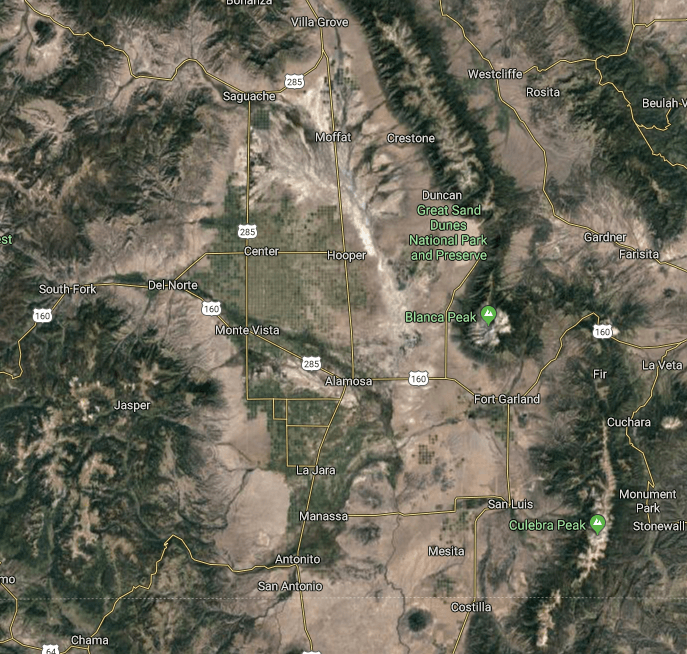Welcome to the San Luis Valley.
Between three mountain ranges in the southwest corner of Colorado, the Valley is slightly larger than the state of Massachussets with a population of 46,780.
0

Welcome to the San Luis Valley.
Between three mountain ranges in the southwest corner of Colorado, the Valley is slightly larger than the state of Massachussets with a population of 46,780.
Hover over elements to learn more about the Valley.
Click the red button to travel to the next location.
The San Luis Valley is made up of six counties.
Alamosa, Conejos, Costilla, Mineral, Rio Grande, and Saguache.
It takes about two hours to drive from one end of the Valley to the other.
Although the region is united in its geographic location, the counties each have distinct cultures and identities.
As I came to learn, there are a lot of layers and cultural complexities in the Valley an outsider eye might not see.
The Great Sand Dunes
If you've come to the San Luis Valley before, you probably visited the Great Sand Dunes National Park.
That's how I first came to the Valley.
I grew up four hours North of the Valley in Denver. Growing up and in while college, I travlled to the Valley with family and friends to go camping or rock climbing.
For many in the Front Range, if you have been to the Valley it was probably for ecotourism. At the sand dunes, its easy to understand why so many are attracted by the land.
Early settlers of the Valley told legends of horses with webbed feet that could be seen running on nights with full moons. They whispered of sheppards who crossed over the dunes with their flocks only to be swallowed by the sand.
The dunes feel like they go on forever and they seem to hold much of the same mythical power today.
The average resident of the Valley makes $33,164 annually. (data from 2014)
Nationally, that per capita annual salary is 53,657 (data from 2014).
Poverty rates in the counties range from 15% to 23%.
The national average poverty rate is 12.3%
The services of a Valley based non-profit which address the symptoms of poverty are used by 1 in 3 residents in the Valley.
The prevalence of poverty, the lack of jobs, and the requirement of a car to travel makes economoic mobility difficult to impossible for many in the Valley.